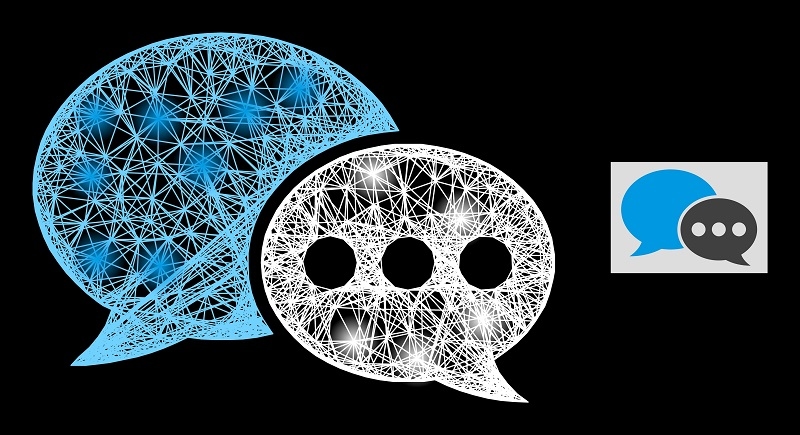
The history of online community tools tells the charming tale of ways human beings have connected digitally, from message boards in the ‘90s to the thriving Discord communities of 2025. Whether you’re analysing digital network case research or are interested in how tech has developed, expertise in this digital development reveals how we’ve moved from static message boards to dynamic chat apps.
In the primary technology of the net, early internet forum platforms laid the foundation for group conversations, debates, and digital culture. Today, the upward thrust of Discord groups suggests how flexibility, real-time interplay, and customisation force the cutting-edge online enjoy. This weblog explores the whole discussion board to speak about app evolution, and the way deciding on the proper device means matching the device to the network needs.
The earliest examples of network tools date back to the 1980s and early '90s, when early internet discussion board platforms commenced operating. These have been textual content-heavy, no-frills environments—critical for lovers, teachers, and hobbyists looking to discuss niche subjects.
In the pre-Web era, BBSes allowed users to dial in using modems to submit messages, trade documents, and be a part of threaded discussions.
Usenet, which evolved in 1980, became one of the first massive-scale early internet discussion board platforms. With no relevant server, it operated on a disbursed model where discussions took place in classes (newsgroups) like sci. Math or comp.Lang.Python.
By the late ‘90s, tools like phpBB, vBulletin, and Invision Power Board enabled groups to host public forums with higher formatting, moderation tools, and membership functions.
Long-form, thoughtful discussion was fostered by these early net discussion board designs. To set the tone for future digital participation, they suggested dependent talks and allowed customers to peruse subjects by category.
As the era developed, so did the manner we talk. The discussion board to talk app evolution is marked by means of key technological shifts and modifications in consumer behaviour.
In the 2000s, forums exploded in popularity. Every niche—from motors to coding to parenting—had its domestic. Moderators enforced policies, and users constructed reputations through the years. These forums had been often searchable and indexed by using Google, preserving years of know-how.
With the rise of MSN Messenger, AIM, and later WhatsApp and Facebook Messenger, the choice for real-time communication started to take maintain. As a result, online communities' expectations steadily changed.
While Discord was first used for gaming, Slack became a platform for commercial cooperation. By mixing features like voice chat, roles, bots, and integrations, both topologies made it difficult to distinguish between chat and network.
Driven by comfort, speed, and consistent connectivity, this discussion board to discuss app evolution signalled the transition from static posts to fluid, dynamic interactions.
Learning from digital community case studies allows us to understand the fee of matching the right platform to the network’s needs.
Built as a Q&A platform, Stack Overflow borrowed heavily from forum architecture but introduced a layer of gamification and upvotes. It’s an instance of matching a device to community needs—in this situation, tech experts want authoritative answers, fast.
Reddit combines discussion board factors (threads, votes, moderation) with real-time discussions in AMAs and live threads. Subreddits are established but lively, making Reddit a case to have a look at in balancing new and old formats.
In the rise of Discord groups, gaming and Web3 spaces dominate. These servers provide real-time text, audio, and occasional management, making them a long way more interactive than traditional forums. Brands now use Discord to host product drops, interact with fanatics, and run assist channels.
These virtual network case studies spotlight that successful structures are those that understand their customers and adapt their gear accordingly.

In the beyond five years, the upward thrust of Discord communities has been amazing. What started as a gamer-centric chat app has now grown to be the desired digital assembly floor for all styles of organisations—startups, book clubs, hobbyists, and company-level manufacturers.
The rise of Discord communities reflects the demand for bendy, all-in-one communication hubs. Unlike static forums, Discord allows immediacy, which inspires common participation and builds stronger bonds.
On the boards, customers regularly browsed and, on occasion, published. On Discord, users take part greater actively due to real-time activities, pings, and the casual tone.
For instance, many groups that lived on Reddit or traditional boards have migrated to Discord to guide deeper engagement, quicker support, and extra stay events.
Despite Discord’s upward push, there’s no one-size-fits-all solution. Matching the device to the community's wishes is still the golden rule whilst choosing a platform.
Platforms like Discourse, Circle, and Tribe offer current variations of traditional forums. Meanwhile, Slack, Telegram, and Discord dominate the chat-first scene. The key lies in matching the tool to the network's desires, primarily based on goals, user behaviour, and content format.
The market is likewise changing to provide hybrid network answers that consist of chat and discussion board functions. This allows users to participate at their tempo and closes the space between the discussion board and app evolution.
This current equipment highlights that the destiny of history on the online network tools lies in adaptability, permitting every group to locate the right rhythm and fashion of communication.
While now not “interactive” in the traditional sense, email newsletters remain a crucial piece of online network building. Platforms like Substack, Beehiiv, and ConvertKit have allowed creators to monetise audiences while maintaining direct contact with subscribers.
Email is regularly utilised in tandem with boards and Discord, displaying that even in 2025, the oldest gear still plays a role in digital community management.
Reviewing the records of online community tools, well-known shows a few clean classes:
Digital leaders may create better online places that close, evolve, and support user goals by using the discussion board to debate app progress.
We’ve come a long way inside the records on line network gear—from the text-based forums of the ‘80s to the emoji-rich servers of Discord in 2025. While structures have changed, the intention has remained the same: connection. Today, the upward thrust of Discord communities shows how immersive, real-time, and flexible systems meet the cutting-edge consumer’s expectations. Yet early internet forum platforms still offer cost for targeted, expertise-rich engagement. And selecting the right device is still all approximately matching the tool to the community's wishes.
Whether you are launching a startup community, constructing a spot organisation around a hobby, or running an assist space for a SaaS product, knowing this evolution gives you the strength to make the right selections.
So, what’s next? AI-powered network equipment? Fully immersive metaverse chat areas? Time will tell. But if the past is any indicator, virtual communities will keep conforming, much like those who build them.
This content was created by AI